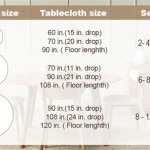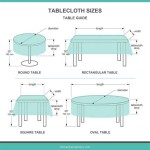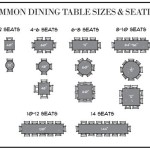The Dining Table Seating Arrangement Problem
The dining table seating arrangement problem is a combinatorial optimization challenge focusing on arranging individuals around a table, typically a circular or rectangular one, to maximize overall satisfaction or minimize dissatisfaction. This problem, while seemingly simple, becomes exponentially complex as the number of individuals increases and the criteria for optimal seating become more nuanced. Applications extend beyond mere social gatherings, finding relevance in fields like resource allocation, event planning, and even software engineering. The core challenge lies in considering individual preferences, constraints (such as dietary restrictions or group affiliations), and objectives (like maximizing conversation flow) to determine the most desirable seating arrangement.
The problem can be approached from various mathematical and computational perspectives. Graph theory, combinatorial optimization, and constraint satisfaction programming are often employed. The goal is to find an arrangement that optimizes a specific objective function, which quantifies the “goodness” of a given seating configuration. This objective function can be based on factors like minimizing the number of pairs who dislike each other sitting next to each other, maximizing the number of compatible pairs, or ensuring a balanced distribution of individuals with different attributes.
Solving this problem often involves exploring a vast search space of possible arrangements. For instance, with 'n' individuals around a circular table, there are (n-1)! possible arrangements. This factorial growth makes brute-force approaches impractical for even moderately sized groups. Therefore, sophisticated algorithms and heuristics are necessary to efficiently find near-optimal solutions.
Key Point 1: Defining the Objective Function
The first and arguably most crucial step in tackling the dining table seating arrangement problem is to clearly define the objective function. This function mathematically represents what constitutes a "good" or "desirable" seating arrangement. The components of this function should directly reflect the user's preferences and the constraints of the situation.
Consider a scenario where the primary goal is to minimize conflict. The objective function could be defined as the sum of "dislike" scores between adjacent individuals. Each pair of individuals might have a pre-assigned "dislike" score (ranging from 0 for no dislike to a higher number representing strong animosity). The algorithm then seeks to minimize the total sum of these scores around the table. Conversely, if the objective is to maximize stimulating conversation, the objective function could be based on compatibility scores between adjacent individuals, reflecting their shared interests and communication styles.
In more complex scenarios, the objective function might incorporate multiple factors. For instance, it could include both compatibility and dislike scores, weighted according to their relative importance. Dietary restrictions could also be integrated, penalizing arrangements that place individuals with allergies next to specific food items. The key is to create a function that accurately quantifies the desired outcome.
Furthermore, the objective function should be adaptable to different table shapes. For a rectangular table, the adjacency rules change, affecting the calculation of adjacent individuals. Additionally, the function can be adjusted for different seating styles, such as allowing individuals to sit on the same side of a rectangular table, if desired.
It is important to recognize that the definition of a "good" seating arrangement is subjective and dependent on the specific context. Therefore, considerable effort should be invested in crafting an objective function that accurately reflects the priorities and preferences of the organizers or participants.
Key Point 2: Algorithmic Approaches to Solution
Given the computational complexity of the dining table seating arrangement problem, various algorithmic approaches have been developed to find near-optimal solutions within reasonable timeframes. These approaches can be broadly categorized into exact methods, heuristic methods, and metaheuristic methods.
Exact methods, such as integer programming and branch-and-bound algorithms, guarantee finding the optimal solution, but they can become computationally intractable for large problem instances. Integer programming involves formulating the problem as a set of linear inequalities and constraints, which are then solved using specialized solvers. Branch-and-bound systematically explores the search space, pruning branches that cannot lead to the optimal solution.
Heuristic methods provide a faster, but potentially less accurate, approach. These methods use rules of thumb or guidelines to guide the search process, often focusing on promising areas of the search space while sacrificing the guarantee of optimality. Examples include greedy algorithms, which make locally optimal decisions at each step, and local search algorithms, which iteratively improve a solution by making small changes.
Metaheuristic methods are higher-level strategies that guide the search process of other algorithms, often combining elements of both exact and heuristic methods. These methods aim to escape local optima and explore a wider range of the search space. Examples include simulated annealing, which mimics the process of cooling a material to reach a low-energy state; genetic algorithms, which use concepts from evolutionary biology to evolve a population of solutions; and tabu search, which maintains a list of recently visited solutions to avoid cycling.
The choice of algorithm depends on the size and complexity of the problem, the desired level of accuracy, and the available computational resources. For small problem instances, exact methods may be feasible. For larger instances, heuristic or metaheuristic methods are often necessary.
Furthermore, hybrid approaches can be employed, combining different algorithms to leverage their respective strengths. For example, a genetic algorithm might be used to generate an initial set of promising solutions, which are then refined using a local search algorithm.
Key Point 3: Constraints and Practical Considerations
Beyond defining the objective function and selecting an appropriate algorithm, addressing constraints and practical considerations is crucial for successfully solving the dining table seating arrangement problem in real-world scenarios. These constraints can range from hard rules that must be satisfied to soft preferences that are desirable but not strictly enforced.
Hard constraints might include dietary restrictions, such as allergies or religious requirements, or seating requirements based on group affiliations or family relationships. For example, one might insist that individuals with severe allergies not be seated next to dishes containing the allergen. Similarly, families might want to be seated together or at least near each other. These constraints must be strictly enforced to ensure a feasible and acceptable seating arrangement.
Soft constraints, on the other hand, might represent preferences that are desirable but not essential. Examples include seating individuals with similar interests together or separating individuals who have a known history of conflict. These constraints can be incorporated into the objective function as penalties or rewards to guide the search process towards more desirable solutions.
Practical considerations also play a significant role. The physical layout of the dining area, including the shape and size of the table(s), can influence the feasibility of certain seating arrangements. Accessibility considerations, such as ensuring that individuals with mobility impairments can easily access their seats, should also be taken into account.
Another practical consideration is the scalability of the solution. As the number of individuals increases, the computational complexity of the problem grows rapidly. Therefore, it is important to choose an algorithm that can handle the problem size within a reasonable timeframe. In some cases, it may be necessary to simplify the problem by relaxing certain constraints or reducing the number of factors considered in the objective function.
Finally, user interface design is essential for making the solution accessible and usable. A well-designed interface should allow users to easily input individual preferences, constraints, and other relevant information. It should also provide clear and intuitive visualizations of the resulting seating arrangements, allowing users to easily evaluate and modify the solutions.
Incorporating these constraints and practical considerations ensures that the solution to the dining table seating arrangement problem is not only mathematically optimal but also feasible, acceptable, and user-friendly in real-world settings. Failing to account for these factors can lead to solutions that are theoretically sound but practically unusable.

Python Program For Dining Table Seating Arrangement Problem Prepinsta

Etiquipedia Basic Dinner Seating Etiquette

Seating Arrangement Questions Solved Answers Tips Leverage Edu

Seating Etiquette Guide

Seating Strategies For Your Dinner Party Parties And More

Types Of Seating Arrangements 8 Must Know Options

Choosing The Best Seating Arrangement For Your Event

Italian Dining Tables How Many Can I Seat Italy By Web

Creating A Seating Plan For Commercial Venue Atlantic Ping

The Best Seating Arrangement Types Auditoria
Related Posts








